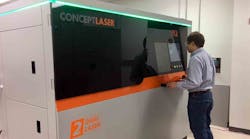General Electric’s GE Global Research center in Niskayuna, N.Y., has drawn a four-year, $9-million award from the U.S. Office of Naval Research to develop accelerated processes for creating exact digital models of legacy parts, as well as to design new parts, which would be used to improve maintenance and replacement programs in defense systems.
GE noted the replacement parts may be applicable to a vast range of military systems, including U.S. Navy ships, allowing technicians to produce and replace parts “on-the-spot.”
GE describes “Digital Twins” as “living, learning digital models of physical assets, parts, processes, and even systems. These models are continually updated as new sensor data or engineering knowledge from technical experts is integrated to reflect the exact state of its physical counterpart at any point in time.”
Technicians and engineers from GE Aviation, GE Additive, Honeywell, Penn State, Lawrence Livermore National Laboratory, Navy Nuclear Lab, and the National Center for Defense Manufacturing and Machining (NCDMM) are involved in building the digital twins from model-based data on parts, and from sensor-based data from 3D metal printers.
The two-phase program will focus first on developing the necessary software and hardware for a Digital Twin program. In Phase 2, its focus will shift to developing 3D Direct Metal Laser Melting systems that will support the ongoing effort.
“Using GE’s Digital Twin technology, we’re aiming to rapidly speed up the time that parts could be re-engineered or newly created using 3D printing processes,” stated Ade Makinde, principal engineer for Additive Technologies at GE Global Research. “With today’s technology, the process for designing a new part can take years. We think we can reduce that timeframe to weeks, with the unique digital solutions under development.”










